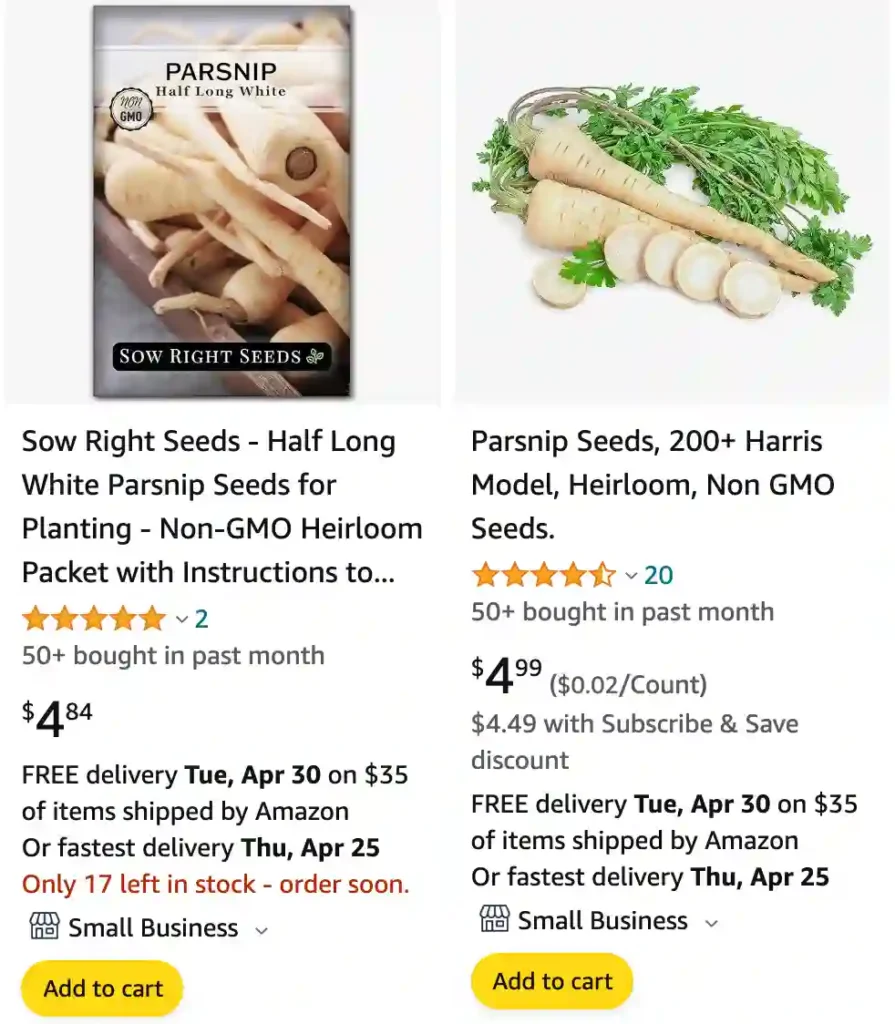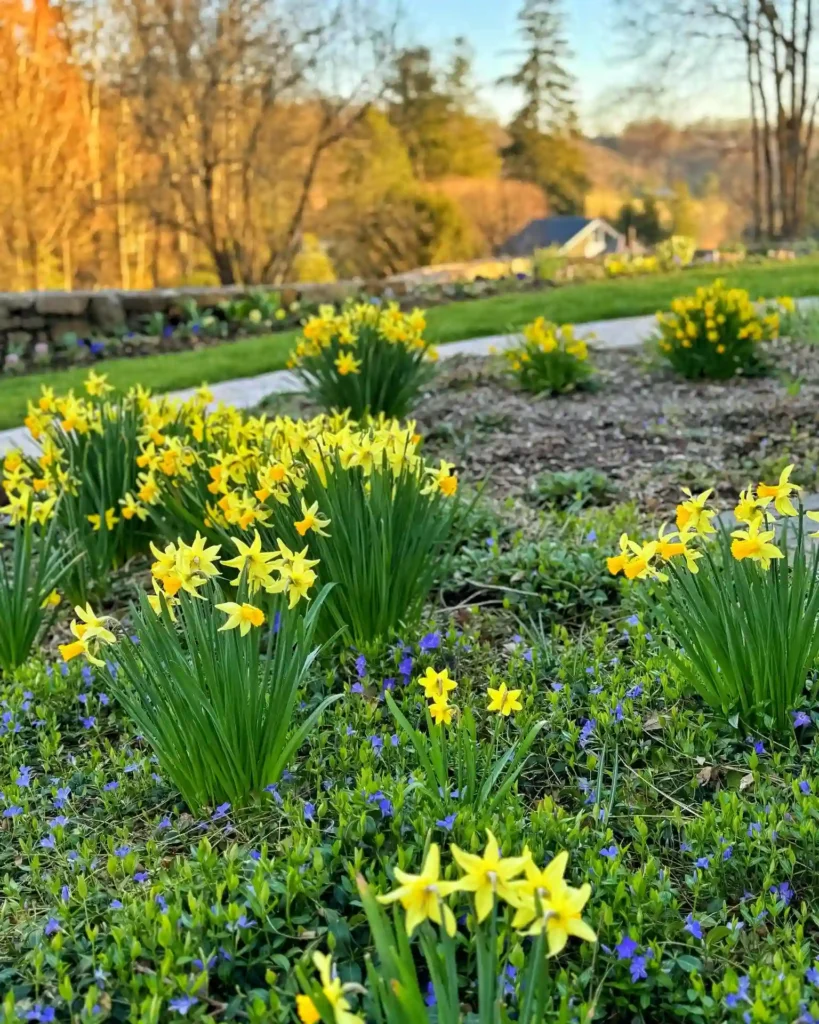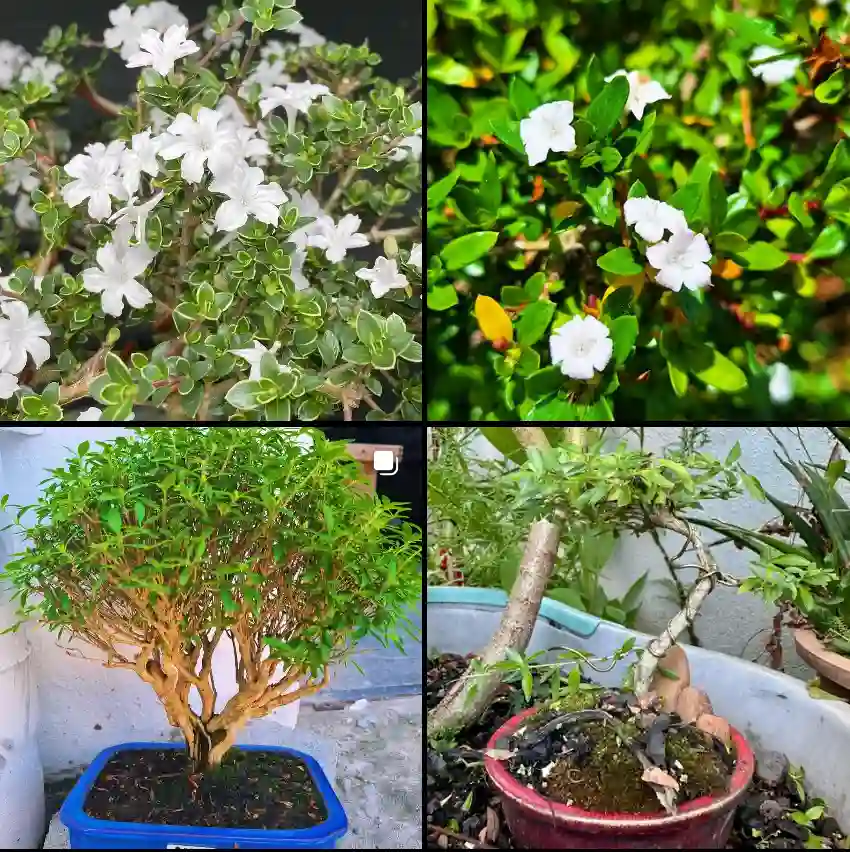
Parsnip: A Culinary and Gardening Journey with Pastinaca Sativa
Parsnips (Pastinaca Sativa) are often overlooked in the modern kitchen, yet they hold a charm that transcends their humble appearance. For me, they are more than just a vegetable—they’re a link to history, a testament to resilience, and a gardener’s delight. Let me share my personal journey with this root vegetable, including its culinary uses, cultivation, and its place in the broader world of gardening.
The Forgotten Root
I first encountered parsnips in a farmer’s market, their pale, cream-colored roots lying modestly beside more colorful vegetables. Unlike carrots or beets, parsnips don’t shout for attention. Yet, there’s a quiet beauty to their tapering form and earthy scent. I was curious and brought a few home, unsure what to expect.
Once cooked, parsnips revealed their magic. Their flavor is a unique blend of sweetness, nuttiness, and earthiness, with hints of spice—like a distant cousin of carrots but with a richer depth. I was hooked. Roasted parsnips with a drizzle of honey became a staple at my table, especially during colder months. They add a creamy texture to soups and a sweet contrast in stews.
Cultivating Parsnips: A Gardener’s Challenge
Growing parsnips turned out to be as rewarding as cooking them. They are biennial plants, meaning they take two years to complete their life cycle. However, they’re usually grown as annuals for their roots.
Parsnips thrive in loose, well-drained soil rich in organic matter. I learned early on that compacted soil could lead to forked roots—a common issue for beginners. Sowing the seeds directly into the ground in early spring was crucial since parsnips don’t transplant well. Germination requires patience; it can take up to three weeks. During this time, keeping the soil moist but not waterlogged was a delicate balance.
What I love most about parsnips is their hardiness. They laugh in the face of frost, and their flavor improves after a few frosty nights, when the starches in the roots convert to sugars. Harvesting them in late fall or even early winter is like unearthing treasure—each root is a reminder of nature’s quiet generosity.
Nutritional and Historical Significance
Parsnips are not just a delight to the palate; they’re also packed with nutrients. They are rich in fiber, vitamin C, and folate, making them a healthy addition to any diet. In ancient times, before the introduction of potatoes to Europe, parsnips were a staple food. They were valued for their sweetness, which was often extracted to make syrups and sweeteners.
The history of parsnips connects them to a bygone era when seasonal eating was a necessity, not a trend. They remind me of the importance of preserving culinary traditions and appreciating the versatility of humble ingredients.
Semantic Connections to Sustainability
In today’s world, parsnips align beautifully with the principles of sustainable agriculture. They are low-maintenance and thrive in organic systems, requiring fewer chemical inputs than some crops. Additionally, their long-growing season means they fit well in crop rotations, helping to improve soil health.
For gardeners like me, parsnips represent a commitment to biodiversity. Growing them in my garden alongside other heritage crops fosters a sense of continuity with the past while contributing to a more sustainable future.
Parsnips in the Broader Context
Exploring parsnips has deepened my understanding of root vegetables as a category. Compared to carrots, parsnips offer a subtler sweetness. Unlike turnips or rutabagas, they lack bitterness, making them more versatile in cooking. They occupy a unique space in the culinary and gardening worlds—bridging the gap between forgotten traditions and modern sensibilities.
Parsnips also invite experimentation. One day, I hope to create a parsnip puree infused with truffle oil or pair roasted parsnips with a spicy harissa glaze. For now, I’m content perfecting my classic roasted parsnip recipe, enjoying their comforting warmth on chilly evenings.
FAQs
Can dogs eat parsnips?
Yes, my dog has eaten parsnips before and really seems to enjoy them! I always make sure I cook them first since they’re easier for him to digest that way. I usually roast them along with other veggies like carrots and potatoes. Sometimes I’ll just steam some and mash them up into his food for a little extra flavor and nutrition. Just be careful not to overdo it – while parsnips are safe for dogs, too much can give them a bit of an upset stomach.
Are parsnips keto?
Sadly, parsnips aren’t the best veggie choice for me when I’m sticking to my keto plan. They’re a bit on the starchy side, which means they have a higher carb count than I can fit into my daily limits. It’s a bit of a bummer, because I honestly love their sweet and nutty flavor. But, when I’m really focused on ketosis, I try to stick to alternatives like radishes or turnips. They give me a similar texture and taste satisfaction without throwing my macros out of balance.
Can you eat parsnips raw?
You know, I’d always assumed parsnips needed to be cooked – that’s the only way I’d ever tried them. But, I recently learned you can absolutely eat them raw! Apparently, they’re slightly sweet with a subtle nutty flavor. I’m a bit hesitant to try it myself just because of what I’m used to, but I’m intrigued. I’ve seen recipes for raw parsnip salads that sound interesting, so maybe I’ll give it a shot and see if I find a new way to enjoy these root veggies!
How to cook a parsnip?
I love cooking parsnips because they’re so versatile! My absolute favorite way to make them is by roasting. I just toss them with a bit of olive oil, salt, pepper, and maybe a sprinkle of herbs, then roast them in a hot oven until they’re tender and golden brown on the edges. The flavors caramelize beautifully in the oven. But I also enjoy steaming them and mashing them with a bit of butter and nutmeg, or boiling and adding them to rich and hearty stews. Parsnips really take on the flavors of whatever you’re cooking them with, which makes them fun to experiment with.
How to roast parsnips?
Roasting parsnips is my go-to because it’s so easy and brings out their incredible flavor. I start by preheating my oven nice and hot, around 425°F. Then I prep my parsnips – peel them, trim off the ends, and cut them into even-sized pieces. I like to go for long sticks or wedges. Next, I toss them on a baking sheet with plenty of olive oil, a generous sprinkle of salt and pepper, and maybe some of my favorite herbs like rosemary or thyme. Roast them for about 20-30 minutes, flipping halfway through, until they’re golden brown and tender. That’s when you get those amazing caramelized edges with a sweet and nutty flavor!
Are parsnips low carb?
Unfortunately, parsnips aren’t considered low-carb. They’re definitely a healthier choice compared to something like potatoes, but they still have a decent amount of carbohydrates. For me, that means enjoying them in moderation. I love their taste, and the fiber they contain helps offset some of the carbs. When I want a parsnip fix, I try to work them into my meals in small portions so as not to blow my daily carb goals.
Can rabbits eat parsnips?
While I don’t have a rabbit myself, I’ve heard that parsnips can actually be a tasty treat for them! Of course, like anything, moderation is important. Parsnips shouldn’t be a staple in their diet, but a few small pieces here and there seem to be enjoyed by many bunnies. I know if I had a rabbit, I’d love to offer them some parsnip and see how they liked the sweet, nutty flavor.
Do you have to peel parsnips?
It depends! Sometimes I peel my parsnips, other times I don’t. If I’m working with older, larger parsnips, I always peel them. The skin can get pretty tough and a bit woody as they mature. However, with younger and smaller parsnips, a good scrub is often all they need. I like the rustic feel of leaving the skin on, and since younger parsnips are more tender anyway, it doesn’t impact the eating experience at all.
Can chickens eat parsnips?
Chickens seem to love parsnips! I’ve seen people offer both raw and cooked parsnips to their flocks. I imagine that cooked parsnips would be a bit easier for them to digest. It’s always neat to see chickens enjoy different veggies and root crops. If I ever have chickens, I’d definitely try parsnips as a little treat and see what they think!
Can you freeze parsnips?
Absolutely, you can freeze parsnips! It’s a great way to preserve them if I have a bunch on hand. I find the best way to freeze them is to blanch them first. I peel and chop them into bite-sized pieces, then quickly boil them for a couple of minutes before submerging them in an ice bath. This stops them from cooking further, helping them retain texture and flavor. Then I dry them thoroughly, toss them in freezer bags, and they’re ready to go! Frozen parsnips are perfect for tossing into soups and stews.
How long to boil parsnips?
How long I boil my parsnips depends on how large I cut the pieces. For bite-sized chunks, it usually takes about 10-15 minutes for them to become fork-tender. But if I have larger wedges or whole parsnips, the cooking time will be a bit longer, sometimes closer to 20 minutes. The best way to know for sure is to simply poke them with a fork – if it goes in easily, they’re done! I always err on the side of slightly underdone parsnips, since they can get a little mushy if overcooked.
How long to boil parsnips?
How long I boil my parsnips depends on how large I cut the pieces. For bite-sized chunks, it usually takes about 10-15 minutes for them to become fork-tender. But if I have larger wedges or whole parsnips, the cooking time will be a bit longer, sometimes closer to 20 minutes. The best way to know for sure is to simply poke them with a fork – if it goes in easily, they’re done! I always err on the side of slightly underdone parsnips, since they can get a little mushy if overcooked.
What does a parsnip plant look like?
Parsnip plants have a few distinct characteristics:
First-Year Growth:In the first year, parsnip plants form a rosette of green leaves that resemble flat-leaf parsley or carrot tops. The leaves have a somewhat feathery appearance.
Second-Year Growth:If left unharvested, the plant enters its second year of growth. It then produces a tall, flowering stalk with small yellow flowers in an umbrella shape (called an umbel).
The Roots:Of course, the most well-known part is the parsnip root itself. This taproot is long, creamy white, and has a shape similar to a carrot, but thicker.
Can guinea pigs eat parsnips?
Yes, guinea pigs can eat parsnips in moderation as a special treat! They’re a good source of Vitamin C, which is essential for guinea pigs. However, parsnips are also a bit high in sugar, so it’s important to only offer them occasionally.
Here’s how to feed parsnip to your guinea pig:
Small Amounts: Serve a small slice or a few bite-sized cubes no more than a couple of times a week.
Wash Thoroughly: Always wash parsnips before offering them to your pet.
Introduce Gradually:Start with a tiny piece to see how your guinea pig reacts.
Remember, a balanced guinea pig diet mostly consists of hay, fresh leafy greens, and a small amount of pellets.
When are parsnips in season?
Parsnips are cool-weather root vegetables, so their peak season is typically fall through spring. They actually become sweeter after a frost! You’ll likely find them in stores year-round, but they’ll be freshest and most flavorful during those cooler months. Depending on your specific location, the exact time of peak season may vary a bit.
Where to buy parsnips?
You have a few options for finding parsnips:
Grocery Stores: Most well-stocked grocery stores will carry parsnips in their produce section, especially during their peak season. Look near other root vegetables like carrots and beets.
Farmers Markets: Farmers markets are a fantastic way to find the freshest, locally grown parsnips. This is especially great during the fall and winter when they’re in season.
Specialty Produce Stores: If your regular grocery store doesn’t have parsnips, try a store specializing in fresh produce. They’ll often have a larger variety of vegetables.
Online Retailers: Some online retailers specialize in fresh groceries and produce. You may be able to order parsnips for delivery if you can’t find them locally.
Are parsnips low fodmap?
Yes, parsnips are considered low FODMAP in certain serving sizes. According to the Monash University Low FODMAP Diet app, a serving size of about 1 medium parsnip (or roughly 75g) is safe for those following the diet. Eating larger portions of parsnips may trigger IBS symptoms in some people since they contain moderate amounts of oligosaccharides.
It’s always a good idea to pay attention to how your body reacts and adjust your intake accordingly. If you’re particularly sensitive, you might want to start with a smaller serving size and see how you feel.
When to plant parsnip?
The best time to plant parsnips depends on your climate:
Cooler Climates: If you live in an area with long, cool growing seasons, you can direct sow parsnip seeds outdoors as early as 3-4 weeks before your last expected frost in the spring. Parsnips actually germinate best in cooler soil temperatures.
Warmer Climates: In regions with short growing seasons or hot summers, you have a few options: Late Summer/Fall Sowing: Plant parsnip seeds in late summer or early fall to harvest over the winter. Parsnips can tolerate frost and their flavor even improves with light freezes.
Indoor Start: Start the seeds indoors about 4-5 weeks before your last expected frost and then transplant the seedlings once the soil warms up.
Important Note: Parsnip seeds are notoriously slow to germinate. Don’t get discouraged if it takes a few weeks for them to sprout!
Are parsnip leaves edible?
While parsnip leaves are technically edible, it’s best to proceed with some caution. Here’s why:
Furanocoumarins: Parsnip leaves contain compounds called furanocoumarins, which can cause skin irritation in some individuals, especially when combined with exposure to sunlight.
Bitterness: Parsnip leaves can have a strong, bitter, somewhat earthy flavor that many people find unappealing.
Limited Culinary Use: While you can find some recipes incorporating parsnip leaves, they aren’t a staple culinary ingredient like their roots.
So, can you eat them? Generally, it’s better to steer clear of parsnip leaves unless you know you don’t have any sensitivity to furanocoumarins. If you do want to experiment, start with a very small amount and cook them thoroughly to diminish the bitter flavors.
What does parsnip seedlings look like?
Parsnip seedlings look quite similar to carrot seedlings. Here’s what to look for:
Early Stage:At their very earliest stage, they’ll emerge as thin, thread-like sprouts with two tiny leaves (cotyledons).
Slightly Older:Parsnip seedlings develop feathery, fern-like leaves that are deeply divided. They resemble parsley or carrot tops.
Color: The leaves are a bright, vibrant green.
It can sometimes be tricky to distinguish them from other seedlings in the carrot family (like parsley and carrot), especially when they’re young.
Are parsnips good for diabetics?
Parsnips can be a part of a healthy diet for diabetics, but moderation and careful management are key. Here’s why:
Pros:
Fiber: Parsnips are a good source of fiber, particularly soluble fiber. This helps slow down digestion and prevents blood sugar spikes after meals.
Moderate Glycemic Index: Their glycemic index (GI) is considered moderate, meaning they have a less drastic impact on blood sugar compared to high GI foods like white potatoes.
Nutrients: Parsnips offer vitamins and minerals like Vitamin C, potassium, and folate.
Cons:
Carb Content: Parsnips are still a source of carbohydrates, so they need to be factored into your overall meal planning if you have diabetes.
Overall: Parsnips can be a healthier option than starchy vegetables like potatoes for people with diabetes. However, portion control and understanding how they fit into your overall carb intake are crucial. It’s always best to discuss your diet with your doctor or a registered dietitian to develop a personalized plan that works for you.
Do parsnips taste like carrots?
Parsnips and carrots are both root vegetables and belong to the same family, so they have some similarities in flavor. However, they also have distinct differences:
Similarities: Both have an underlying sweetness and a slightly earthy flavor profile.
Differences: Parsnips are sweeter than carrots, with a nuttier, almost spicy undertone.
Carrots have a more vibrant sweetness and a less complex flavor.
Think of parsnips as a more assertive, complex cousin to the carrot. If you enjoy the sweetness of carrots, there’s a good chance you’ll like the more nuanced flavor of parsnips too!
Final Thoughts
Parsnips have become a personal favorite, not just for their flavor but for the lessons they offer. They teach patience in the garden, creativity in the kitchen, and mindfulness about the choices we make regarding food.
If you haven’t yet embraced Pastinaca sativa, I encourage you to give them a try. Whether you grow them in your backyard or pick them up at a local market, they have a way of surprising you. For me, parsnips are more than a root vegetable—they’re a reminder that simplicity often hides profound beauty.
If i die, water my plants!



